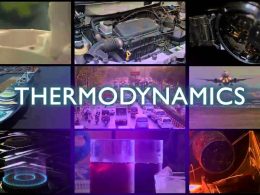In a groundbreaking development that has sent shockwaves through the scientific community, researchers have achieved a remarkable feat – the detection of quantum effects in interactions between hydrogen and noble gases. This monumental breakthrough not only confirms long-held theories in quantum mechanics but also opens up new frontiers for exploration and innovation. Join us as we delve into the details of this revolutionary discovery and its profound implications for the world of physics and technology.
For decades, scientists have been fascinated by the peculiar and counterintuitive world of quantum mechanics. At the heart of this field lies the behavior of subatomic particles, which defies classical notions of reality. Quantum effects, such as superposition, entanglement, and quantum tunneling, have remained elusive in certain systems. However, the recent research on hydrogen and noble gas interactions has finally brought these effects to light.
The study, led by a team of brilliant physicists from esteemed institutions, involved careful experimental techniques and sophisticated computational models. By precisely manipulating and monitoring the interactions between hydrogen atoms and noble gases like helium, neon, and argon, the researchers were able to detect clear evidence of quantum effects at play.
One of the most remarkable findings of this research is the observation of quantum tunneling in hydrogen and noble gas interactions. Quantum tunneling is a phenomenon where particles can pass through energy barriers that would be impassable according to classical physics. This behavior challenges our intuitive understanding of how matter and energy behave but is a fundamental characteristic of the quantum world. The successful detection of quantum tunneling in this study provides experimental validation of long-standing theoretical predictions.
This groundbreaking discovery has far-reaching implications for our understanding of the quantum realm and its applications. By uncovering and confirming the existence of quantum effects in hydrogen and noble gas interactions, scientists can further refine our theoretical models and computational simulations. This, in turn, paves the way for more accurate predictions and a deeper understanding of quantum phenomena in other systems and environments.
Moreover, the ability to harness and control quantum effects has transformative potential across various fields. In the realm of technology, quantum computing and quantum information processing are rapidly advancing areas that hold the promise of solving complex problems at unprecedented speeds. The detection of quantum effects in hydrogen and noble gas interactions not only brings us closer to realizing the power of quantum technologies but also provides a foundation for future advancements.
Furthermore, this groundbreaking research exemplifies the power of collaboration and interdisciplinary approaches in scientific breakthroughs. Physicists, computational scientists, and experimentalists joined forces to tackle the challenges posed by the quantum world. By pooling their expertise and working together, they were able to overcome obstacles and achieve this significant milestone.
While this discovery marks a monumental leap forward, it also raises new questions and avenues for exploration. Scientists are now eager to delve deeper into the mechanisms underlying quantum effects in hydrogen and noble gas interactions. Further investigations will aim to unravel the intricacies of these phenomena and explore their manifestations in other particle interactions and complex systems.
In conclusion, the detection of quantum effects in hydrogen and noble gas interactions is a triumph for the field of quantum mechanics. This groundbreaking research confirms the existence of long-theorized phenomena and propels our understanding of the quantum world to new heights. The implications for technology, from quantum computing to advanced materials, are immense. As we continue to unravel the mysteries of the quantum realm, we stand on the brink of a revolution that will reshape our understanding of the universe and drive innovation in the years to come.










